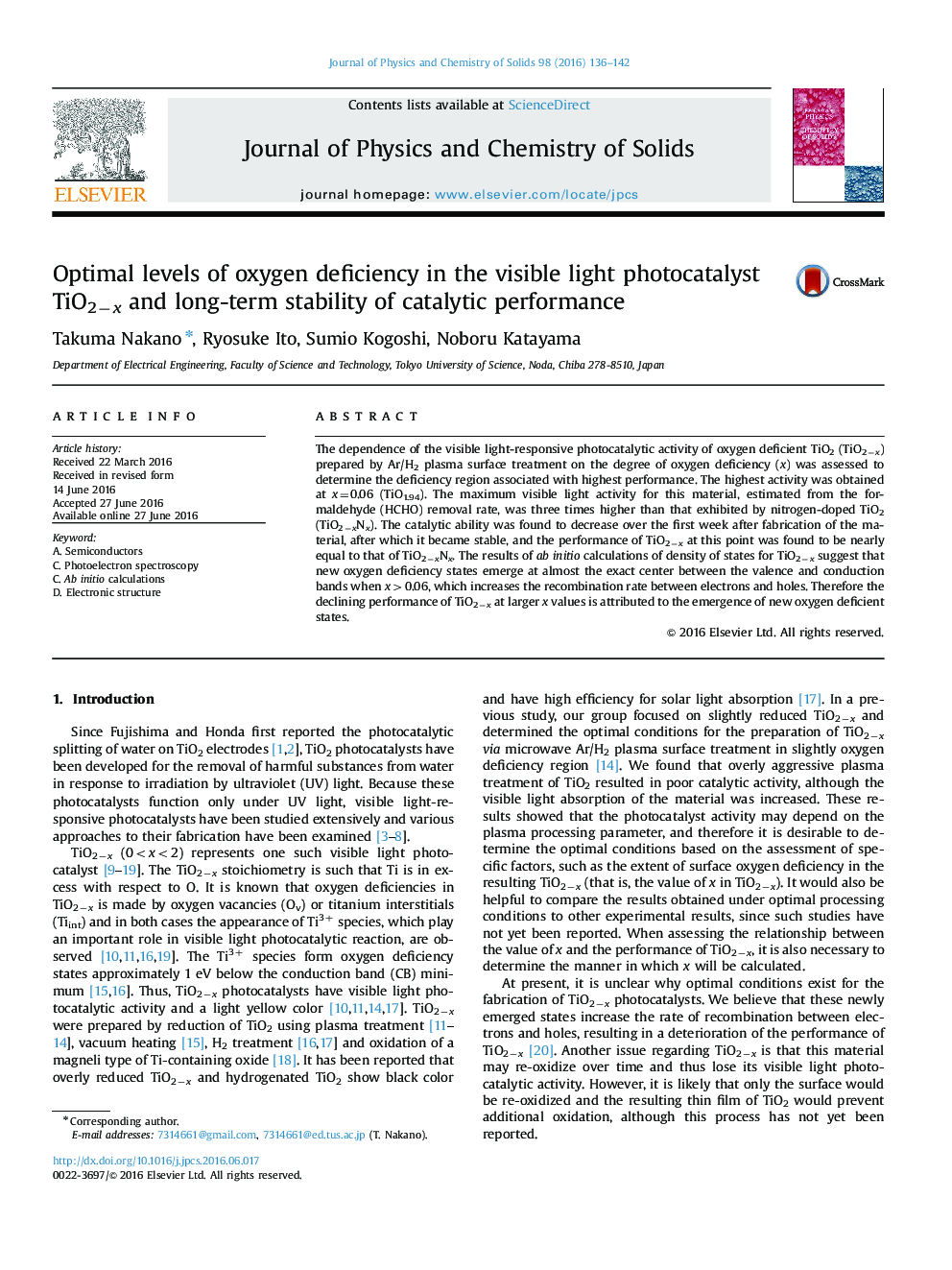| Article ID | Journal | Published Year | Pages | File Type |
|---|---|---|---|---|
| 1515252 | Journal of Physics and Chemistry of Solids | 2016 | 7 Pages |
•The optimal extent of oxygen deficiency in the visible light photocatalyst TiO2−x is obtained.•The density of states of TiO2−x are calculated.•The long-term deterioration of the performance of TiO2−x is obtained.
The dependence of the visible light-responsive photocatalytic activity of oxygen deficient TiO2 (TiO2−x) prepared by Ar/H2 plasma surface treatment on the degree of oxygen deficiency (x) was assessed to determine the deficiency region associated with highest performance. The highest activity was obtained at x=0.06 (TiO1.94). The maximum visible light activity for this material, estimated from the formaldehyde (HCHO) removal rate, was three times higher than that exhibited by nitrogen-doped TiO2 (TiO2−xNx). The catalytic ability was found to decrease over the first week after fabrication of the material, after which it became stable, and the performance of TiO2−x at this point was found to be nearly equal to that of TiO2−xNx. The results of ab initio calculations of density of states for TiO2−x suggest that new oxygen deficiency states emerge at almost the exact center between the valence and conduction bands when x>0.06, which increases the recombination rate between electrons and holes. Therefore the declining performance of TiO2−x at larger x values is attributed to the emergence of new oxygen deficient states.
